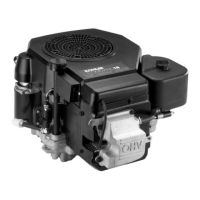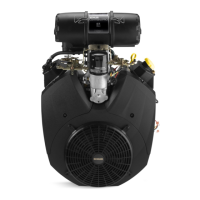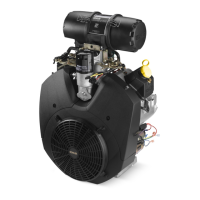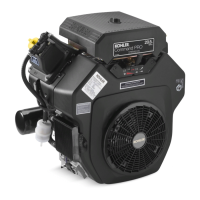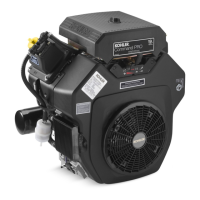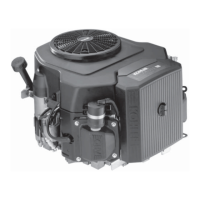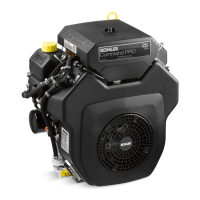5.4
Section 5
Fuel System and Governor
High Altitude Operation
Operating the engine with the wrong engine
confi guration at a given altitude may increase
its emissions and decrease fuel effi ciency and
performance. To ensure correct engine operation
at altitudes above 1219 meters (4000 ), it may be
necessary to have an authorized Kohler dealer install
a special high altitude jet kit in the carburetor. If a
high altitude kit has been installed, the engine must
be reconverted to the original jet size, before it is
operated at lower altitudes, or overheating and engine
damage can result.
To obtain high altitude kit information or locate a
dealer near you, call 1-800-544-2444 to fi nd the names
of the nearest Kohler Co. Service Centers or, access
our web site at: www.kohlerengines.com and click
on the Service & Dealer Locator located in the upper
right hand corner. The service center will need your
engine specifi cation number which is found on your
Engine ID Label.
Fuel Shut-off Solenoid
Most carburetors are equipped with a fuel shut-off
solenoid. The solenoid is a ached to the fuel bowl. See
Figure 5-4. The solenoid has a spring-loaded pin that
retracts when 12 volts is applied to the lead, allowing
fuel fl ow to the main jets. When current is removed
the pin extends blocking the fuel fl ow.
Troubleshooting – Carburetor Related Causes
Fuel Shut-Off
Solenoid
Figure 5-4. Fuel Shut-off Solenoid.
Condition Possible Cause/Probable Remedy
1. Engine starts hard, runs roughly,
or stalls at idle speed.
1. Low idle fuel mixture (some models)/speed improperly
adjusted. Adjust the low idle speed tab, then adjust the low idle
fuel needle.
2. Engine runs rich (indicated by
black, sooty exhaust smoke,
misfi ring, loss of speed and power,
governor hunting, or excessive
thro le opening).
2a. Clogged air cleaner. Clean or replace.
b. Choke partially closed during operation. Check the choke lever/
linkage to ensure choke is operating properly.
c. Low idle fuel mixture is improperly adjusted. Adjust low idle
fuel needle (some models).
d. Float level is set too high. Adjust fl oat according to Float
Replacement Procedure.
e. Dirt under the fuel inlet needle. Remove needle; clean needle
and seat and blow with compressed air.
f. Bowl vent or air bleeds plugged. Remove low idle fuel adjusting
needle. Clean vent, ports, and air bleeds. Blow out all passages
with compressed air.
g. Leaky, cracked or damaged fl oat. Submerge fl oat to check for
leaks.
3. Engine runs lean (indicated by
misfi ring, loss of speed and power,
governor hunting, or excessive
thro le opening).
3a. Low idle fuel mixture is improperly adjusted. Adjust low idle
fuel needle (some models).
b. Float level is set too low. Adjust fl oat according to Float
Replacement Procedure.
c. Idle holes plugged; dirt in fuel delivery channels. Remove low
idle fuel adjusting needle. Clean main fuel jet and all passages;
blow out with compressed air.
4. Fuel leaks from carburetor. 4a. Float level set too high. See Remedy 2d.
b. Dirt under fuel inlet needle. See Remedy 2e.
c. Bowl vents plugged. Blow out with compressed air.
d. Carburetor bowl gasket leaks. Replace gasket.
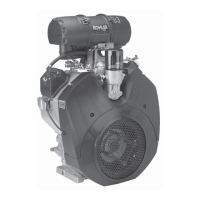
